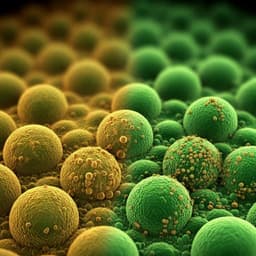
Medicine and Health
Ectopic expression of a mechanosensitive channel confers spatiotemporal resolution to ultrasound stimulations of neurons for visual restoration
S. Cadoni, C. Demené, et al.
Explore the groundbreaking research conducted by Sara Cadoni and colleagues, which reveals an innovative ultrasound-mediated activation strategy to restore vision by modulating neuronal activity with millisecond precision. This less invasive approach could revolutionize brain-machine interfaces for visual restoration.
~3 min • Beginner • English
Related Publications
Explore these studies to deepen your understanding of the subject.







